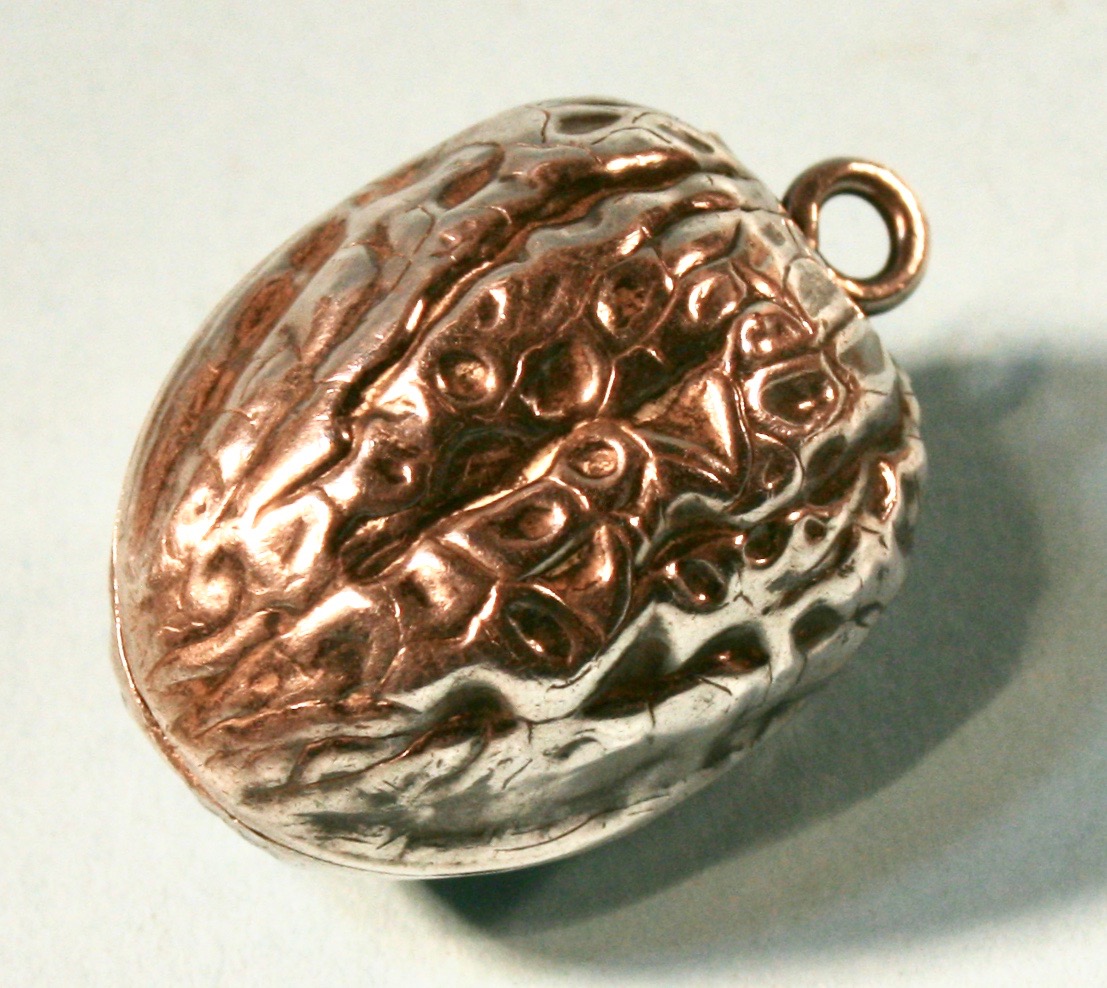

Title: Antique Silver Walnut Jewelry Necklace Keepsake Locket Charm
Shipping: $29.00
Artist: N/A
Period: 19th Century
History: N/A
Origin: North America > United States
Condition: Excellent
Item Date: N/A
Item ID: 48
A Very beautiful Little Sterling silver Walnut Locket Keepsake Charm. Handmade 18th-century Antique Keepsake Necklace Storage Box. These were used to keep Sewing equipment. Most women put a thimble or are little note inside. This walnut was made from a skilled silversmith, A true Artisan. A silversmith is a metalworker who crafts objects from silver. The terms silversmith and goldsmith are not exactly synonyms as the techniques, training, history, and guilds are or were largely the same but the end product may vary greatly as may the scale of objects created. Silversmiths saw or cut specific shapes from sterling and fine silver sheet metal and bar stock, and then use hammers to form the metal over anvils and stakes. Silver is hammered cold (at room temperature). As the metal is hammered, bent, and worked, it 'work-hardens'. Annealing is the heat-treatment used to make the metal soft again. If metal is work-hardened, and not annealed occasionally, the metal will crack and weaken the work. Silversmiths may also work with copper and brass, especially when making practice pieces, due to those materials having similar working properties and being more affordable than silver.
In the ancient Near East the value of silver to gold being less, allowed a silversmith to produce objects and store these as stock. Ogden states that according to an edict written by Diocletian in 301 A.D., a silversmith was able to charge 75, 100, 150, 200, 250, or 300 denarii for material produce (per Roman pound). At that time, guilds of silversmiths formed to arbitrate disputes, protect its members' welfare and educate the public of the trade. Silversmiths in medieval Europe and England formed guilds and transmitted their tools and techniques to new generations via the apprentice tradition. Silver working guilds often maintained consistency and upheld standards at the expense of innovation. Beginning in the 17th century, artisans emigrated to America and experienced fewer restrictions. As a result, silver working was one of the trades that helped to inaugurate the Technological and industrial history of the United States Silver-working shift to industrialization in America.
Link: https://en.wikipedia.org/wiki/Silversmith
Although jewelers also work in silver and gold, and many of the techniques for working precious metals overlap, the trades of jeweler and Silversmith have distinct histories. Chain–making and gem–setting are common practices of jewelers that are not usually considered aspects of silversmiths.
The tradition of making (iron / plate) armor was interrupted sometime after the 17th century. Silversmithing and goldsmithing, by contrast, have an unbroken tradition going back many millennia. The techniques used to make armor today (whether for movies or for historical recreation groups) are an amalgam of silversmith forming techniques and blacksmith iron–handling techniques.